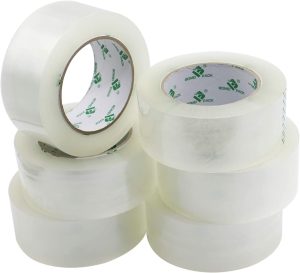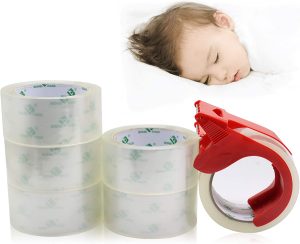Using tape effectively also involves taking safety precautions to ensure you, your surroundings, and your projects remain safe. Here are some safety tips to keep in mind when using tape:
1. Read and Follow Instructions:
- Always read and follow the manufacturer’s instructions on the tape packaging. Different tapes may have specific usage guidelines and safety precautions.
2. Proper Ventilation:
- If you’re using tapes that involve adhesives or paints, make sure you’re working in a well-ventilated area to prevent inhaling fumes.
3. Avoid Skin Contact:
- Avoid prolonged skin contact with tapes that have strong adhesives. If you accidentally get tape adhesive on your skin, gently remove it and wash the area with soap and water.
4. Eye Protection:
- When using tapes that could result in small particles or adhesives becoming airborne, wear safety goggles or glasses to protect your eyes.
5. Skin Sensitivity:
- If you have sensitive skin, consider wearing gloves when handling certain types of tapes to avoid potential skin irritation.
6. Allergies:
- Be aware of any allergies you might have to adhesive materials. If you experience any allergic reactions, discontinue use and seek medical attention if necessary.
7. Temperature Considerations:
- Some tapes may not perform well in extreme temperatures. Check the recommended temperature range for the tape you’re using and ensure your working environment is within that range.
8. Fire Safety:
- Certain tapes are flammable, especially those with strong adhesive properties. Keep tapes away from open flames, sparks, and other sources of ignition.
9. Prevent Tripping Hazards:
- When using tape on the floor for marking or securing cables, make sure it’s properly adhered and won’t create a tripping hazard.
10. Electrical Safety:
- When using tape in electrical applications, ensure that it’s appropriate for electrical insulation and follow proper electrical safety guidelines.
11. Proper Storage:
- Store tapes in a cool, dry place, away from direct sunlight and extreme temperatures. Proper storage can help maintain their adhesive properties.
12. Safe Removal:
- When removing tape, especially from delicate surfaces, do so slowly and carefully to avoid damaging the surface or leaving adhesive residue.
13. Child Safety:
- Keep tapes and tape dispensers out of reach of children. Some tapes can be a choking hazard, and others may have strong adhesives that could cause harm.
14. Dispose Properly:
- Dispose of used tape and tape cores properly. Some tapes may need specific disposal methods due to their adhesive properties.
15. Material Compatibility:
- Ensure the tape you’re using is compatible with the materials you’re applying it to. Some tapes may damage certain surfaces or react with certain substances.
Remember that safety should always be a top priority when using any type of material, including tape. By following these safety tips, you can effectively use tape while minimizing potential risks and hazards.


















